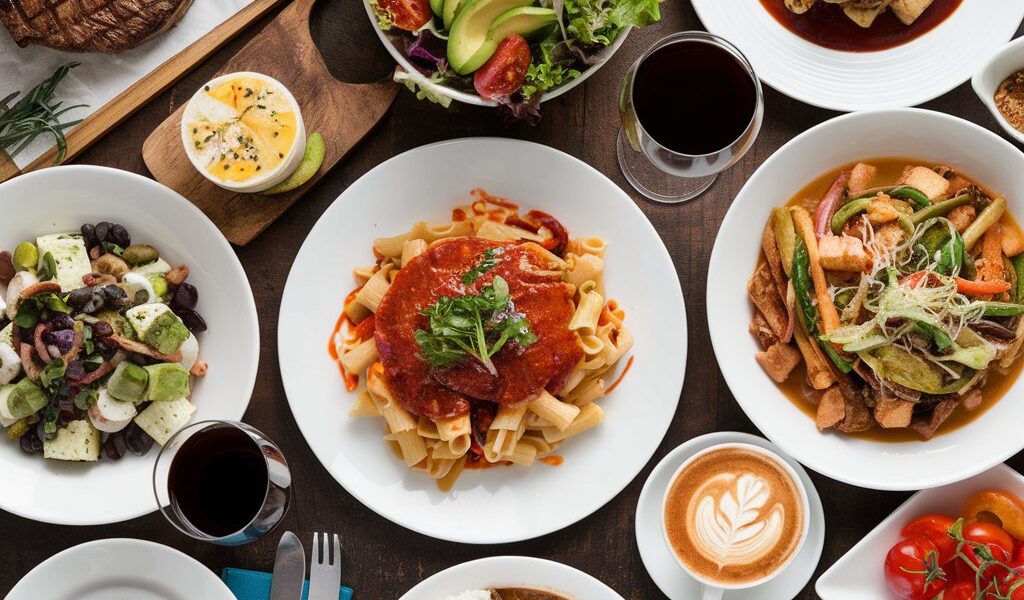Setting a menu is essential to avoid waste and to plan family meals taking into account everything we already have at home. These days, even more so. With limited access to the streets and supermarkets, the watchword is to be able to create a simple and economical weekly menu .
Last week, I gave you some ideas for a healthy weekly menu . hope this makes it easier for you when deciding what to make for your meals. It also helps you avoid wasting food.
These are just a few ideas, which you can and should adapt to your family’s tastes! So, let’s get to our simple and economical weekly menu .
1. Monday
PA – Quick Oat Bread
Lunch – Soup: Caldo verde + Boiled fish with potatoes and vegetables
Snack – Carob, ginger and apple bread + natural orange juice – a healthy snack, loaded with good nutrients that boost our immunity.
Dinner – Sweet potato frittata – if you don’t have sweet potatoes, use whatever potatoes you have, and the same goes for the toppings.
2. Tuesday
PA – Healthy Brioche
Lunch – Soup: Carrot cream + Roupa velha with leftovers from yesterday’s lunch – You can make a stew with onion, garlic and olive oil, add the potatoes, vegetables and fish, all cut into small pieces, add some eggs and mix. Sprinkle with parsley (it has a lot of vitamin C).
Snack – Flourless mug cake
Dinner – Turkey breast marinated in orange – any leftovers can be used to make a pie, as well as some croquettes.
3. Wednesday
PA – “Clumsy” cocoa pancakes
Lunch – Soup – Quinoa and kale cream + Healthy meat-free feijoada
Snack – Orange cake in a frying pan
Dinner – Fillets
4.Thursday
PA – Bowl of red fruits – buying frozen fruit is an excellent option at this time when it is not advisable to leave the house all the time!
Lunch – Leek soup + Spaghetti with tuna bolognese – Simply sauté an onion and garlic in olive oil. Add tomato pulp and seasoning to taste (oregano and herbes de Provence work very well). Add grated carrot and let it cook (if necessary, add a little water). Finally, add the tuna, adjust the seasoning and, if you like, add a little cream or cream cheese to make it creamier.
Snack – Yogurt with granola
Dinner – Rice with leftover feijoada. Make a stew, add the leftover feijoada and the raw rice and let it fry a little. Finally, adjust the seasoning, add water and cover until ready.
5.Friday
PA – Nutritious Scones
Lunch – Soup – coriander cream + Pasta gratin with ham and spinach – an economical recipe, in which you can use the cold meats you have at home and frozen spinach. You can choose to leave out the ham and use more vegetables, thus having a vegetarian meal!
Snack – Fluffy yogurt muffins
Dinner – Leftover soufflé – Make a stew with any leftovers you have in the fridge, whether it’s meat, fish or vegetables. Add the egg yolks and grated cheese to the stew with the leftovers and season to taste. Beat the egg whites until stiff and mix with the cold mixture. Pour into a tall, buttered container and bake in a preheated oven at 200º. When you put the pan in, lower the temperature to 190º and leave to bake for 35/40 minutes.
CONCLUION:
weekly menus are a valuable tool for simplifying meal planning, promoting healthier eating habits, and reducing food waste. By offering a structured approach to meals, they help individuals and families save time and money while ensuring a balanced diet. Whether you’re looking to streamline your grocery shopping or introduce variety into your meals, a weekly menu can be tailored to meet your dietary needs and preferences. Embrace the convenience and creativity that weekly menus provide, and enjoy the benefits of organized meal planning.
FAQs on Weekly Menus
1. What is a weekly menu?
A weekly menu is a planned outline of meals and snacks for each day of the week. It helps organize what you will eat, making grocery shopping and meal preparation easier.
2. Why should I use a weekly menu?
Using a weekly menu can save time, reduce stress, help you stick to a budget, promote healthier eating habits, and minimize food waste.
3. How do I create a weekly menu?
To create a weekly menu, start by selecting recipes for each day. Consider your dietary preferences, available ingredients, and time constraints. Write down meals for breakfast, lunch, dinner, and snacks.
4. Can I customize my weekly menu?
Absolutely! Your weekly menu can be tailored to fit your dietary needs, preferences, and any special occasions. Feel free to include a variety of cuisines and adjust portion sizes.
5. How do I handle leftovers in my weekly menu?
Plan meals that can repurpose leftovers creatively, or include a designated leftover night to reduce food waste and save time.
6. How can I make my weekly menu more flexible?
Leave some days open for spontaneous meals or dining out. This flexibility allows you to adapt to changes in your schedule or cravings.
7. What if I have dietary restrictions?
When creating your weekly menu, take into account any dietary restrictions or allergies. There are plenty of resources available for creating menus that cater to specific diets, such as vegetarian, vegan, gluten-free, or keto.
8. How can I ensure variety in my weekly menu?
Incorporate different proteins, grains, and vegetables throughout the week. Try new recipes, explore seasonal ingredients, and rotate your favorite dishes to keep things interesting.
FOR FERDUR INFORMATION: https://proteomics.uk/




